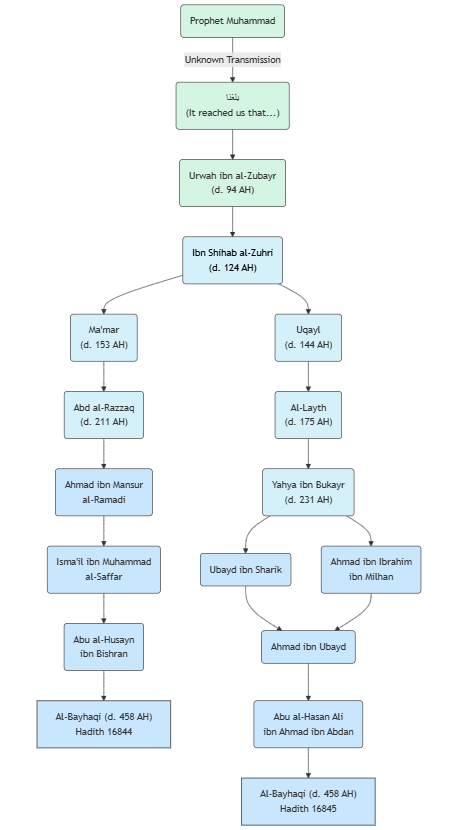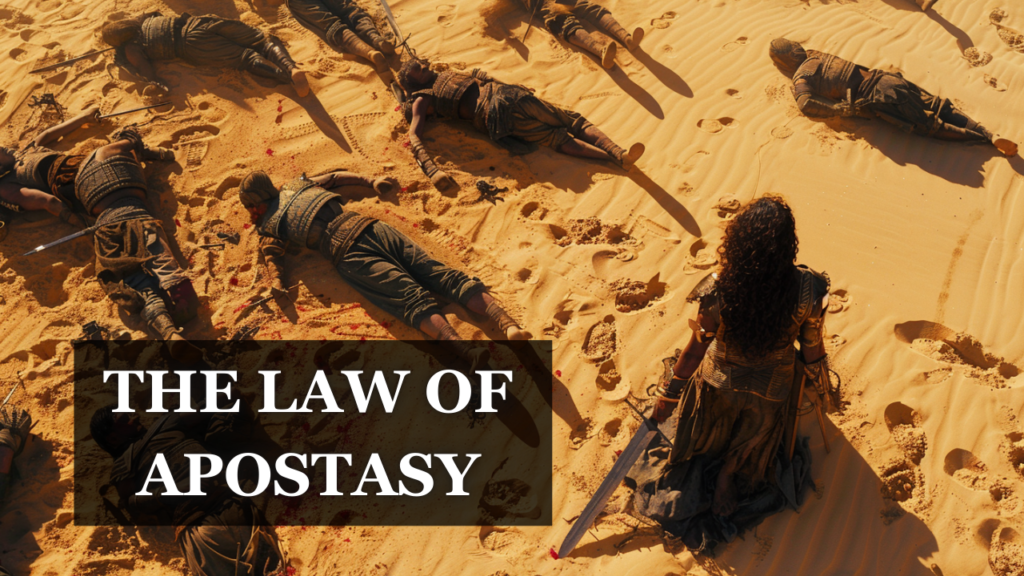There are narrations in the Hadith corpus that describe an event during the Prophet Muhammad’s expedition to Tabuk. As the Prophet dismounted to receive revelation, his camel wandered off, dragging its reins. Hudhayfah ibn al-Yaman retrieved it and returned to the Prophet, who then confided in him a secret: he had been forbidden to pray for certain individuals—a group of hypocrites—without revealing their names to anyone else. After the Prophet’s death, Caliph Umar ibn al-Khattab used Hudhayfah’s actions as a way to identify these hypocrites. If Hudhayfah attended a deceased person’s funeral prayer, Umar would join, but if Hudhayfah withdrew, Umar refrained from praying, instructing others to do so instead.
The Hadith:
Abu al-Hasan Ali ibn Ahmad ibn Abdan informed us, Ahmad ibn Ubayd narrated to us, Ubayd ibn Shareek and Ahmad ibn Ibrahim ibn Milhan said: Yahya ibn Bukayr narrated to us, al-Layth narrated from Uqayl, from Ibn Shihab, who said:
Urwah ibn al-Zubayr reported:
“It reached us that when the Messenger of Allah (ﷺ) set out for the expedition to Tabuk, he dismounted from his riding animal, and revelation was sent to him while his camel remained still. Then, the camel got up and started pulling its reins along until Hudhayfah ibn al-Yaman encountered it, took hold of its reins, and led it back. He found the Messenger of Allah (ﷺ) sitting, so he made the camel kneel and then sat beside it.
When the Prophet (ﷺ) stood up and approached Hudhayfah, he asked, ‘Who is this?’ Hudhayfah replied, ‘Hudhayfah ibn al-Yaman.’ The Messenger of Allah (ﷺ) then said, ‘I am going to share a secret with you—do not disclose it. I have been forbidden to pray for certain individuals, a group of hypocrites.’
The Messenger of Allah (ﷺ) did not inform anyone else of their names except Hudhayfah. After the Prophet (ﷺ) passed away, during the caliphate of Umar ibn al-Khattab (رضي الله عنه), whenever someone died whom Umar suspected to be among that group, he would take Hudhayfah’s hand and lead him to the funeral prayer. If Hudhayfah proceeded with him, Umar would pray over the deceased; but if Hudhayfah withdrew his hand and refused, Umar would also refrain from praying for that person and would instead order someone else to lead the funeral prayer.”
al-Bayhaqi: 16845
The Diagrammed Transmission

Analysis
These hadith have some interesting characteristics that shed light on their transmission and reliability:
- Both narrations trace back through Ibn Shihab al-Zuhri – Al-Zuhri (d. 124 AH) was a prominent early hadith collector and a key figure in systematizing hadith transmission. His central role in both versions suggests that he played a major part in shaping how this report was preserved and transmitted.
- The first narration is from Urwah ibn al-Zubayr, who says “we were informed that…” – This phrasing (balaghana, meaning “it reached us”) indicates that Urwah did not hear the account directly from a primary witness, making the report mursal (a type of hadith where a Tabi’i narrates directly from the Prophet without explicitly mentioning a Sahabi). This weakens its reliability since the missing link could be unknown or uncertain.
- The second narration comes through Ma’mar from al-Zuhri, presenting it as Hudhayfah’s own account – This version attributes the story directly to Hudhayfah ibn al-Yaman, a Companion of the Prophet. However, since it is also narrated through al-Zuhri, it raises questions about whether he had a verified chain or whether this was a general attribution. Additionally, al-Zuhri’s reliance on indirect sources means that critical scholars would examine whether he truly received this narration from Hudhayfah or from others who attributed it to him.
Contradiction with The Quran
There’s a particularly intriguing issue with this narration, because it raises questions about the consistency between the Quran and hadith reports regarding the knowledge of the Prophet. 9:101 explicitly states that there were hypocrites among both the desert Arabs and the people of Madinah whose identities were unknown even to the Prophet:
[9:101] Among the Arabs around you, there are hypocrites. Also, among the city dwellers, there are those who are accustomed to hypocrisy. You do not know them, but we know them. We will double the retribution for them, then they end up committed to a terrible retribution.
Yet, the hadith in question suggests that the Prophet was informed about a specific group of hypocrites and even relayed their identities to Hudhayfah ibn al-Yaman in secret. This raises an apparent contradiction: If the Prophet did not know them, how could he have later identified them and shared this knowledge with Hudhayfah?
Despite the apparent contradiction with Quranic verse 9:101—which explicitly states that the Prophet did not know the identities of the hypocrites—the story of Hudhayfah as the “keeper of the Prophet’s secret” regarding the hypocrites has become deeply entrenched in Islamic tradition. This narrative continues to be widely circulated in religious discussions, sermons, and Islamic literature today, often presented without acknowledging its problematic relationship to the Quranic text (or the issues within the transmission process I.e., being unreliable even using traditional methodology). The tale has persisted largely because it dramatically emphasizes a sahabi’s loyalty, divine guidance, and the special status among the companions, particularly highlighting Hudhayfah’s trustworthiness.




